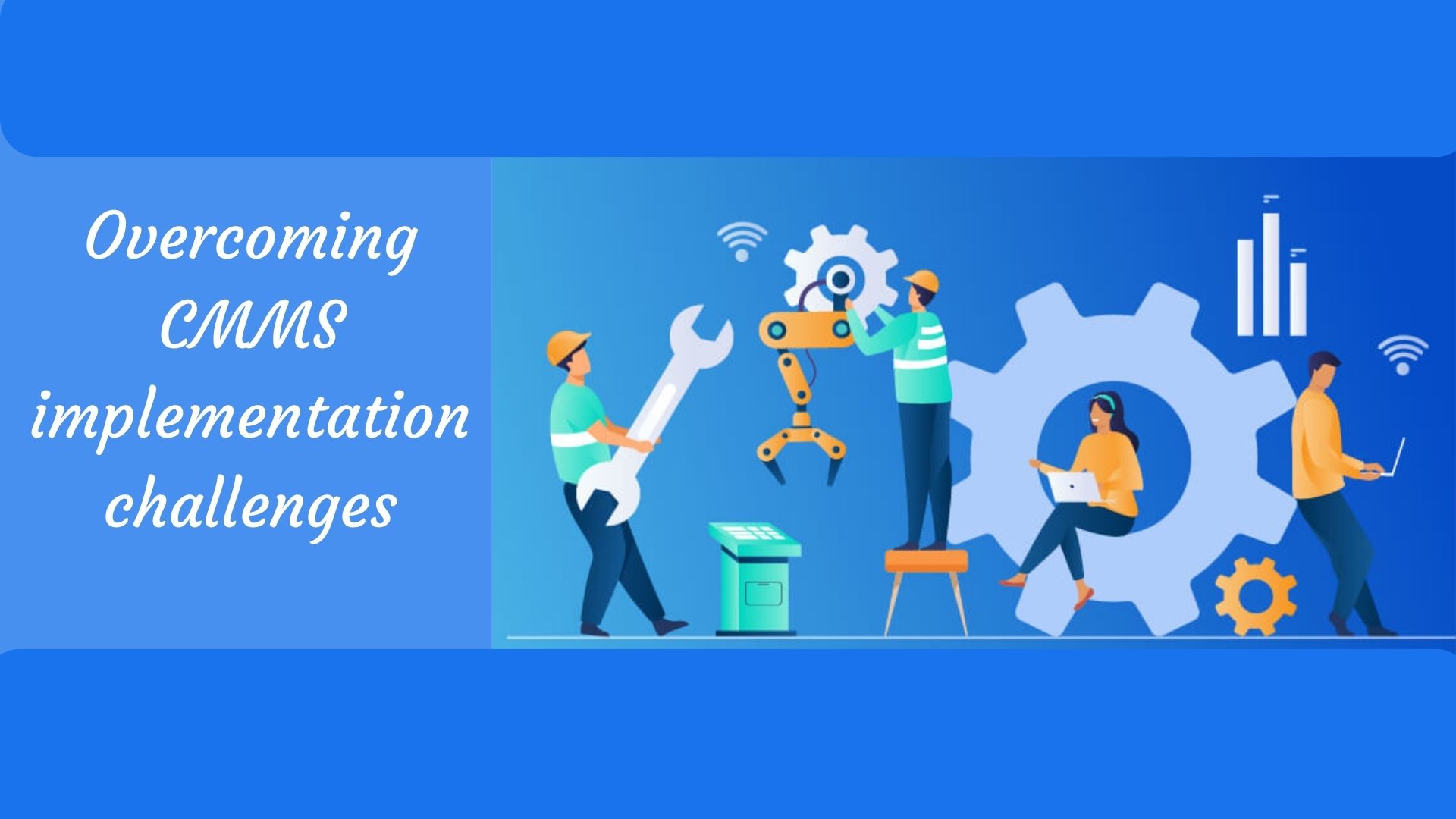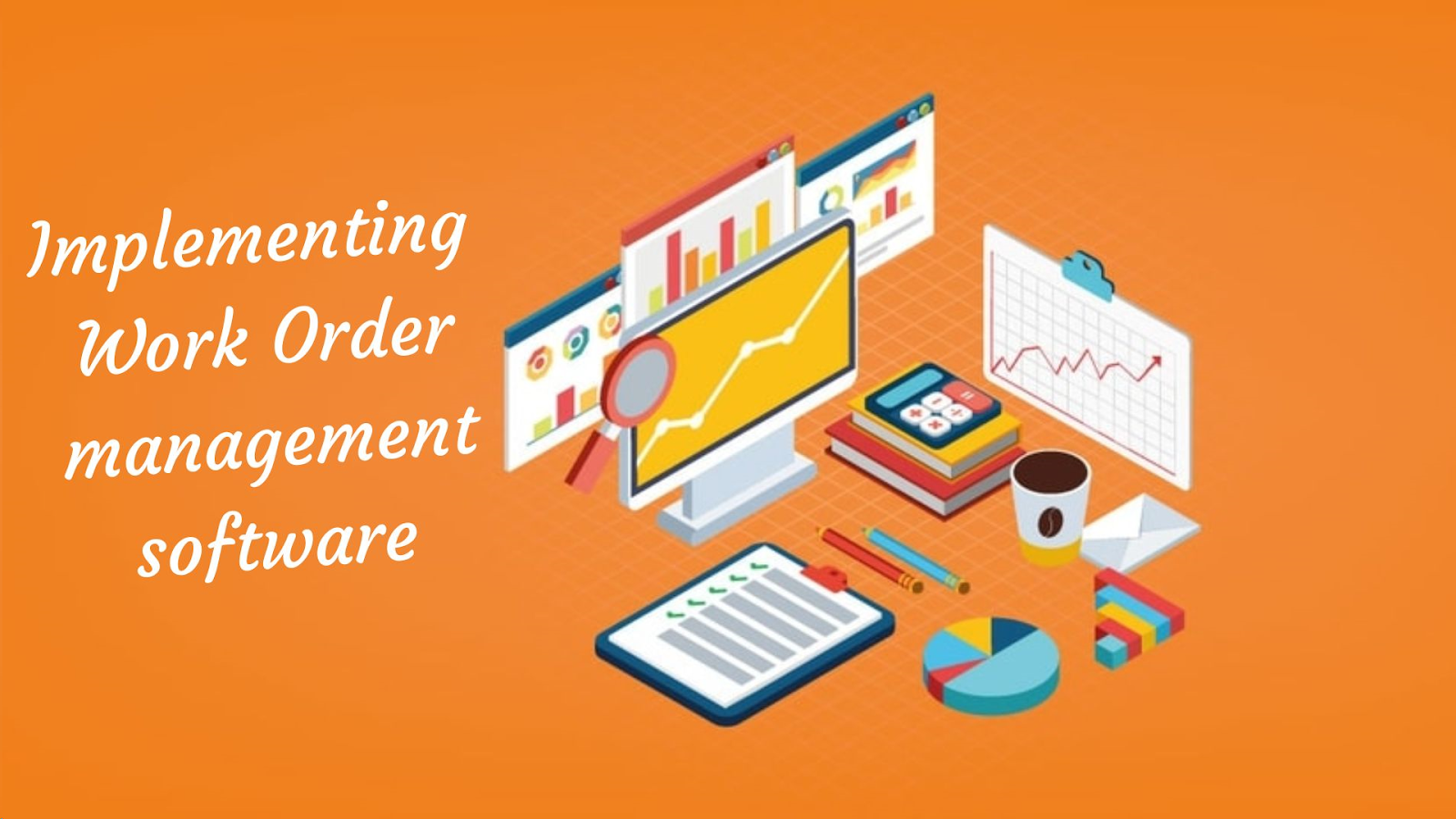
How to overcome CMMS implementation challenges
Madhurima Sanyal |
07 Jun 2024 |
05:54 AM
- Understanding CMMS (computerized maintenance management system) and its Significance
- Overview of CMMS Implementation process
- Planning for Successful CMMS Implementation
- Preparing for Implementation: Key Considerations
- Creating a Robust CMMS Implementation Strategy
- Common Challenges in CMMS Implementation
- Four Reasons Why CMMS Implementations Fail
- Proptor - Optimizing Daily Operations and maintenance for over 10,000 users
- Strategies to Overcome CMMS Implementation Challenges
- Conclusion

How Implementing work order management software helps your organization
Shubham Vakharia 22 Jun 2024 | 12:21 PMOptimize your maintenance tasks with the Proptor App. Streamline work order management for enhanced efficiency and organization. Get started today! ...
Implementing a Computerized Maintenance Management System (CMMS) can revolutionize how businesses manage their maintenance operations. In today's fast-paced industrial landscape, the adoption of CMMS has become synonymous with operational efficiency and streamlined maintenance processes.
Understanding CMMS (computerized maintenance management system) and its Significance
Let's begin by unraveling the essence of CMMS. At its core, a CMMS is a software solution designed to streamline maintenance management processes by digitizing workflows, centralizing data, and optimizing maintenance tasks. Its significance lies in its ability to enhance asset reliability, reduce downtime, and optimize resource allocation within an organization.
Imagine having a comprehensive system that allows you to schedule maintenance tasks efficiently, track asset performance, manage work orders seamlessly, and access historical maintenance data with just a few clicks. This is the power CMMS brings to the table.
Overview of CMMS Implementation process
However, embarking on the journey of CMMS implementation is not without its hurdles. From configuring the system to migrating crucial data and ensuring widespread user adoption, various challenges can surface during the implementation phase.
One of the primary challenges is configuring the CMMS to align perfectly with the organization's unique requirements. This involves setting up system parameters, defining workflows, and tailoring the software to match specific operational needs.
Another significant obstacle is the migration of existing maintenance data into the new system. Data accuracy and integrity are paramount during this process to prevent discrepancies and ensure a smooth transition without disruptions in operations.
Moreover, achieving user adoption across maintenance teams and departments can pose a considerable challenge. Providing comprehensive training programs and addressing concerns regarding a shift from traditional methods to a new technological platform are crucial for successful adoption.
In our exploration of CMMS implementation challenges, we'll delve deeper into each hurdle, offering practical strategies and solutions to navigate through these complexities effectively.
Planning for Successful CMMS Implementation
Embarking on the implementation journey of a Computerized Maintenance Management System (CMMS) requires meticulous planning to ensure a successful integration without encountering overwhelming challenges for effective maintenance operations.
Preparing for Implementation: Key Considerations
Before venturing into CMMS implementation, conducting a thorough evaluation of your current maintenance operations becomes paramount. Assess existing workflows, identify pain points, and align these with the specific needs and goals of your organization.
This phase necessitates ensuring the accuracy and completeness of your data critical to maintenance processes. This step is pivotal for a seamless transition and avoids complexities during data migration.
Creating a Robust CMMS Implementation Strategy
Crafting a well-defined strategy is akin to charting a roadmap to success. Start by assembling a dedicated team responsible for overseeing the implementation process. Define roles, set clear objectives, and establish timelines to ensure a structured approach.
Consider system configuration as a critical step. Tailor the CMMS to align seamlessly with your organization's unique requirements. This involves defining user access levels, customizing workflows, and integrating the system with existing tools and software.
To achieve user buy-in, invest in comprehensive training programs. Equip your maintenance teams with the necessary skills to navigate the new system effortlessly. Address concerns, provide hands-on practice, and encourage user feedback to smoothen the transition process.
By combining meticulous preparation with a robust strategy, businesses can navigate through CMMS implementation challenges more effectively, ensuring a smoother and successful integration.
Common Challenges in CMMS Implementation
Implementing a Computerized Maintenance Management System (CMMS) comes with its share of hurdles, each demanding strategic solutions for successful integration into operational workflows.
Navigating System Configuration Issues
Configuring a CMMS system poses significant challenges. Tailoring the software to match specific organizational needs demands meticulous attention. Defining user access levels, customizing workflows, and integrating the system with existing tools and software can be complex tasks.
Addressing Data Migration Challenges
The migration of existing maintenance data into a new CMMS requires precision. Ensuring the accuracy, integrity, and completeness of data during the migration process is crucial. Without careful handling, discrepancies might arise, disrupting operational flow.
Overcoming User Adoption Hurdles
Achieving widespread user adoption across maintenance teams and departments presents a significant obstacle. Transitioning from conventional methods to a technological platform can trigger reluctance. Comprehensive training programs and addressing user concerns are pivotal for successful adoption.
Navigating these CMMS implementation challenges requires a strategic approach, comprehensive planning, and tailored solutions for each hurdle. Let's delve deeper into these challenges and explore effective strategies to overcome them for a smoother integration process.
Four Reasons Why CMMS Implementations Fail
Implementing a Computerized Maintenance Management System (CMMS) can revolutionize an organization's maintenance operations. However, failures in CMMS implementation are not uncommon, often resulting from various pitfalls. Understanding these potential stumbling blocks is crucial to ensure a smoother implementation process.
Insufficient Needs Assessment
One of the primary reasons for CMMS implementation failure is an inadequate assessment of organizational needs. Often, organizations fail to conduct a comprehensive evaluation of their requirements before choosing a CMMS. To prevent this:
- Thorough Analysis: Take time to understand specific maintenance needs, workflows, and organizational goals.
- User Involvement: Involve end-users and stakeholders in the assessment process to capture diverse perspectives.
Poor Vendor Selection
Choosing the right CMMS vendor is pivotal. Organizations might rush this decision or overlook critical factors, leading to poor compatibility and support issues. Key considerations include:
- Vendor Compatibility: Assess if the vendor aligns with organizational objectives and offers reliable post-implementation support.
- Feature Alignment: Ensure the CMMS software aligns with your organization's current and future needs.
Lack of User-Friendly Interface
Complex and non-intuitive interfaces often hinder user adoption, making it challenging to leverage the CMMS effectively. To counter this challenge:
- Usability Testing: Prioritize systems with intuitive interfaces and conduct usability testing with potential end-users.
- Training Programs: Invest in comprehensive training programs to familiarize users with the CMMS functionalities.
Inadequate Change Management
CMMS implementation often involves substantial changes in workflows and processes. Inadequate change management can lead to resistance and inefficiencies. To address this:
- Communication and Training: Foster open communication and provide extensive training to manage the transition effectively.
- Continuous Evaluation: Regularly assess the impact of CMMS on workflows and make necessary adjustments.
Successful CMMS implementation requires a holistic approach, addressing technical aspects, user needs, and organizational change.
Proptor - Optimizing Daily Operations and maintenance for over 10,000 users
Proptor offers a comprehensive solution designed to streamline property management tasks, providing a range of benefits to users. With Proptor, property managers can efficiently oversee maintenance requests, automate rental payments, and easily communicate with tenants through a centralized platform.
Its user-friendly interface empowers landlords to track expenses, manage vacancies, and schedule property inspections seamlessly. Moreover, Proptor's analytics tools provide insightful data on property performance, enabling informed decision-making for maximizing returns on real estate investments.
Overall, Proptor simplifies property management, offering an integrated solution for landlords and property managers alike.
Strategies to Overcome CMMS Implementation Challenges
Navigating the hurdles of implementing a Computerized Maintenance Management System (CMMS) demands strategic approaches tailored to address specific challenges that arise during the integration process.
Best Practices for Data Management
- Efficient maintenance data management lies at the core of successful CMMS implementation.
- Employing structured data management practices ensures the accuracy, integrity, and accessibility of information critical to maintenance operations.
- Utilize reliable databases, standardized procedures, and periodic data audits to maintain data quality.
Effective Maintenance Team Training Programs
Investing in comprehensive training programs for maintenance teams is instrumental in facilitating the transition to a new CMMS. Tailor training modules to address varying skill levels and ensure hands-on experience with the system. Encourage user feedback and continuous learning to enhance proficiency.
Enhancing Maintenance Processes and Procedures
Refining maintenance processes and workflows is key to maximizing the potential of a CMMS. Identify inefficiencies in existing procedures and leverage the functionalities of the system to streamline workflows. Implement standardized procedures and embrace automation where feasible to optimize maintenance tasks.
Employing these strategies empowers organizations to navigate CMMS
implementation challenges effectively. By focusing on data management, training programs, and process enhancement, businesses can ensure a smoother integration and harness the full potential of their CMMS.
Maximizing Benefits Post-Implementation
Implementing a Computerized Maintenance Management System (CMMS) is just the beginning. To reap maximum rewards, it's essential to leverage the system effectively for ongoing maintenance efficiency and ensure continuous support for continuous improvement.
Leveraging CMMS for Ongoing Maintenance Efficiency
Once the CMMS is in place, its true potential lies in optimizing ongoing maintenance processes. Utilize the system's features to schedule preventive maintenance, track asset performance, and analyze maintenance data for informed decision-making. Seamlessly integrate the CMMS into daily operations to maximize efficiency.
Ensuring Ongoing Support and Continuous Improvement
Sustained success with a CMMS requires ongoing support and a culture of continuous improvement. Provide dedicated resources for system maintenance, user training, and regular updates. Encourage user feedback and system evaluation to identify areas for enhancement and ensure that the CMMS evolves with the changing needs of the organization.
By effectively leveraging the CMMS for ongoing maintenance efficiency and ensuring continuous support and improvement, organizations can maximize the benefits derived from the system and overcome various CMMS implementation challenges.
Conclusion
Understanding CMMS Implementation Challenges:
-
Navigating System Configuration Issues: Often, system configurations present hurdles during implementation, necessitating in-depth understanding and adept handling.
- Addressing Data Migration Challenges: Migrating data seamlessly without errors is a critical aspect that demands meticulous planning and execution.
- Overcoming User Adoption Hurdles: Getting stakeholders and users to embrace the system is an ongoing journey requiring comprehensive training and continuous support.
The Road Ahead:
As organizations evolve, future perspectives entail leveraging CMMS capabilities to:
- Enhance Maintenance Efficiency: Constantly evolving to enhance maintenance efficiency by adopting best practices and utilizing the system's full potential.
- Ensure Continuous Improvement: Establishing a culture of improvement by analyzing system performance and feedback to drive ongoing enhancements.
- Maximize Support and Training: Providing robust ongoing support and training to optimize user experience and system utilization.
While CMMS implementation poses multifaceted challenges, addressing these with strategic planning, ongoing support, and continual improvement ensures organizations harness its full potential, paving the way for enhanced operational efficiency and longevity.